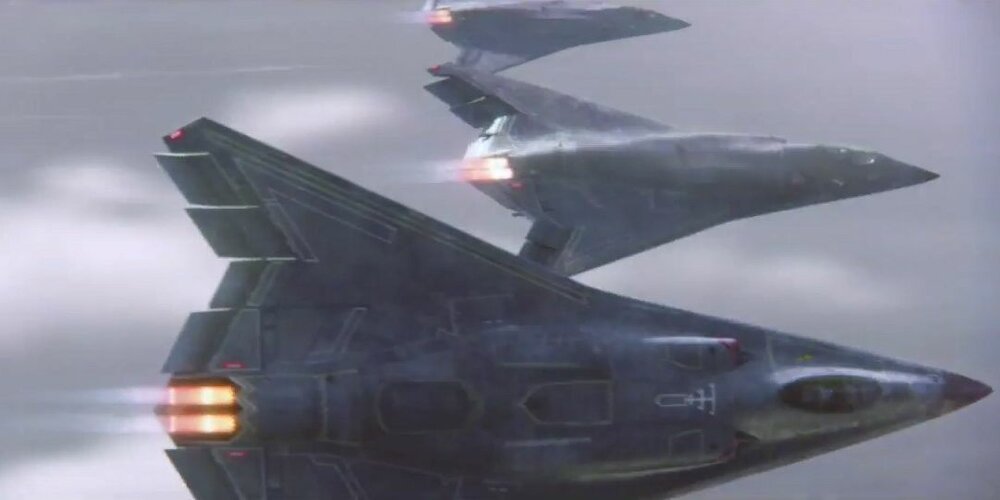I think the USAF wants a long ranged, large payload, manned component with very capable sensors and communications that is survivable in a hostile environment (read: broadband stealth) while still having fighter like maneuverability and speed.
Sounds a bit familiar as a concept.

Reasonable size is a huge value for a fighter by itself (infrastructure considerations)- especially for a fighter that will almost 100% require dispersal on a theater fully within IRBM range.
Operating from even further out is a doubtful proposal - ratio of time on station to time in transit becomes a problem - and that's apart from stretching human capabilities. Furthermore, it may be a
political problem - you can move your forces from out of the range - sure, but can the US move its allies out? What to do if, say, the protected objective is more valuable than the fighters themselves - will they have to give it up and keep the range regardless?
Finally, economics still work the traditional way to some degree: larger fighter=more expensive outright, more service and logistical problems later.
survivable in a hostile environment (read: broadband stealth)
This in particular bothers me.
If you pay for deep
broadband stealth, you probably intend to go in - the whole point of this tech is in the ability to come closer to the enemy without him knowing. Coming closer, in turn, not only makes you more survivable, but makes your weapons deadlier, and lowers required capability of those weapons; the closer you can come undetected - the better.
If your fighter force doesn't really plan to go in - why bother? Sitting further out behind the UCAV screen, within friendly AWACS coverage doesn't really require stealth. It can talk with UCAVs no worse than big stealthy a/c, and its sensors can be just as good.
External carriage is the way to go - cheap integration, any size until your aircraft can physically take off with it, much smaller (cheaper, more adaptable) airframe for the given performance. Like it's pretty normal for modern non-stealth fighters to carry external loads comparable in weight and bulkiness to the aircraft itself - fitting that much inside a supersonic aircraft will lead designers to something B-1 - sized.
The additional factor here is that US is developing a heavy, broadband, all-aspect stealth aircraft capable of carrying very large missiles anyways: it's the b-3. Sure, it's subsonic - but it's ready to fly, and there will be quite a few of them(maybe as many as 160).
A2A weapons would be integrated initially and that it would indeed be a one trick pony.
By one-trick pony i didn't mean just "A2A" - in later 1950s single-role A/C were still OK for the USN (and still were so more than a decade later). I meant sole capability to launch big missiles from afar, i.e. being capable essentially of one single mission - being a loitering interceptor against known heavy bombers. And...nothing else. No other mission, no redundancy (main weapon system gets countered - what then?).
But A2a is a lot of missions - from OfCA to air policing to escorting SAR missions. Great many of them can't be done from afar, nor they can be delegated to a drone(s).
To summ things up:
As of 2022, observers expected next US fighter to be a "big, large, fast, long-range missile thrower" for at least 4 times.
Every single time it was something else - not because big&large wasn't achievable(it was), but because it doesn't really work in too many cases.
IMHO - next US fighter will indeed be broadband stealth, but it won't go far over the current size of fighters (which already isn't small).
It, again, will be much longer-ranged than the raptor(which, frankly speaking, probably isn't hard) - but will try to achieve that in available size.
It will try to be as agile as possible within other requirements - i.e. it won't be primary consideration, but it it will feature in priorities list.
Finally - bay size won't exceed what is already available on the 5th generation too much - it isn't that far from the practical limit in the first place. Instead, focus will be placed on smaller medium-ranged munitions and DEW - as things that allow stealthy fighter with no external carriage to realize their potential to the fullest possible degree.












